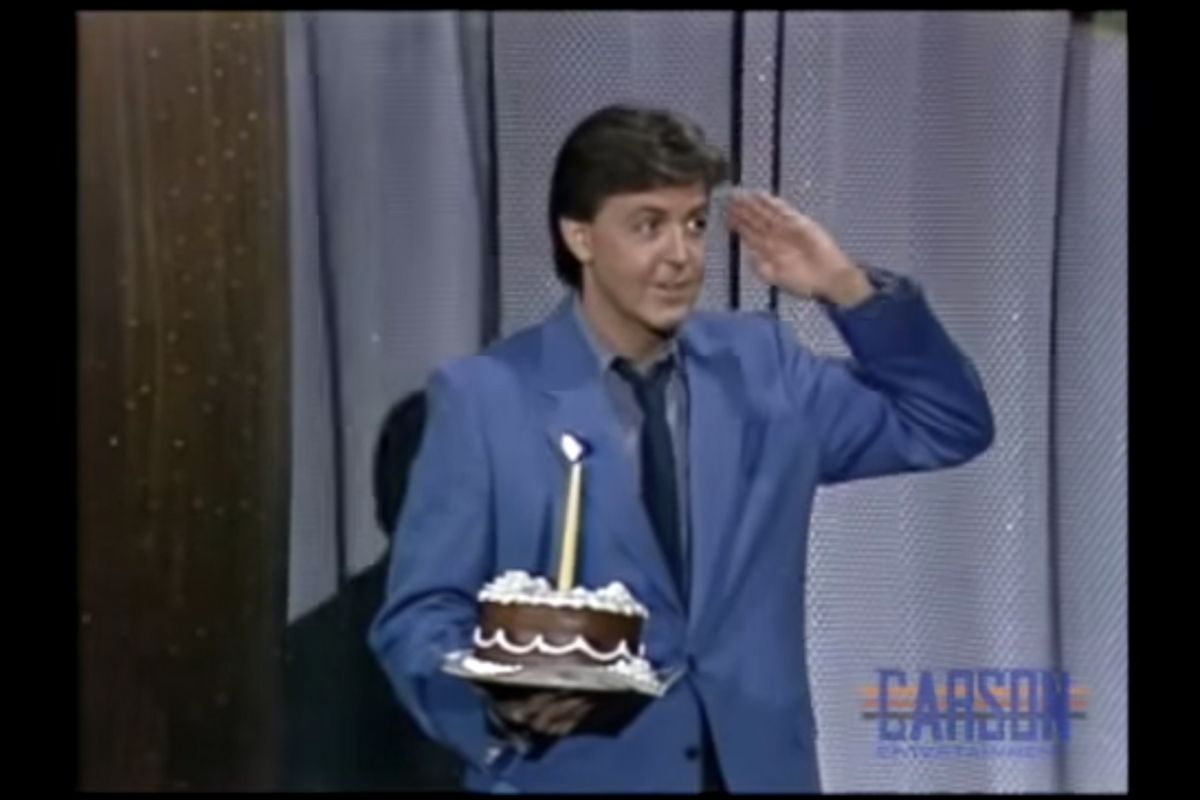Most conspiracy theories never die. That includes the one that insisted Paul McCartney of the Beatles died in a car accident.
Videos by Rare
Fifty-five years after the urban legend first appeared and started afflicting the Beatles fanbase, how did it begin? What was it all about? And will the conspiracy theory itself ever die?
Paul McCartney Isn’t Dead. Right?
Right. The conspiracy theory started making the rounds in 1967, a few years after the Beatles enjoyed more international success than any other band a few years prior.
The “Paul is dead” conspiracy also came four years after the assassination of President John F. Kennedy. The ensuing decades saw conspiracy theories arise around the moon landings, Area 51, the so-called “Reptilian Elite,” and Holocaust revisionism.
Revolution 9 from The Beatles’ White Album, released in November 1968, had people talking since its release. In fact, many songs on the White Album had fans scratching their heads.
Number 9 on Repeat
For starters, Helter Skelter was misinterpreted by Charles Manson to be promising the rise of a race war. Both Beatles fans and conspiracy fanatics have something to say about the infamously famous “Number 9…Number 9…Number 9.”
That’s how the tracks starts: The words “number nine” repeated over and over. And after an Avant-garde gnashing of instruments and sounds inspired by Yoko Ono. The sound bite, as determined by a resourceful Beatles fan, was a recording from the EMI Studios sound effect banks. There, through a collection of homemade tapes with names like Organ Last Will Test and Queen’s Mess, John Lennon found one featuring the recording of an engineer’s voice saying “This is EMI test series number nine.”
Lennon, who’d used the sound banks before, for example, on Yellow Submarine edited the recording to just repeat the phrase, strangely amongst the rest of the noise experimentation. A clever fan reversed the recording to make it sound like a command to “turn me on, dead man.” This abstraction fueled the fire of the “Paul is dead” movement/conspiracy, meaning that the type of popular music being written by Paul McCartney during the days prior to Sgt. Pepper was dead.
College campuses in the U.S. stoked the false rumor, helping it spread even though there wasn’t any truth to it. The urban legend stated McCartney died in early November and a lookalike replaced him for the rest of the Beatles’ tenure.
The cover photo of their album Abbey Road depicts McCartney barefoot — indicating he was dead — and walking out of step with his bandmates.
Macca Survives the False Rumor That He Died
Like many conspiracy theories, the one about Paul persists until this day. In fact, Time magazine in 2009 named “Paul is dead” in an article discussing the top 10 most enduring conspiracy theories.
On the other hand, Paul McCartney — and the Beatles themselves — got a kick out of the hoax and even pranked their fans about it.
Case in point: The cover art for his 1993 live album breathlessly declared Paul Is Live.
But Paul McCartney has carried on.
He turned 80 in June — culminating in his headlining performance at Glastonbury Festival on June 25. Foo Fighters frontman Dave Grohl played with him on I Saw Her Standing There and Band on the Gun, while Bruce Springsteen joined him for Glory Days and I Wanna Be Your Man.
McCartney guest-starred at Foo Fighters’ all-star show of their own. Held at Wembley Stadium, it honored their tragically deceased drummer Taylor Hawkins.



